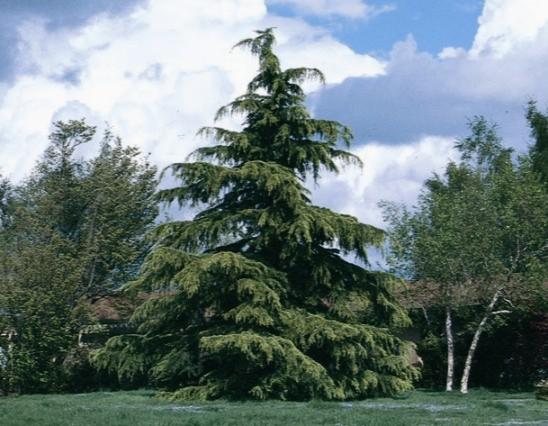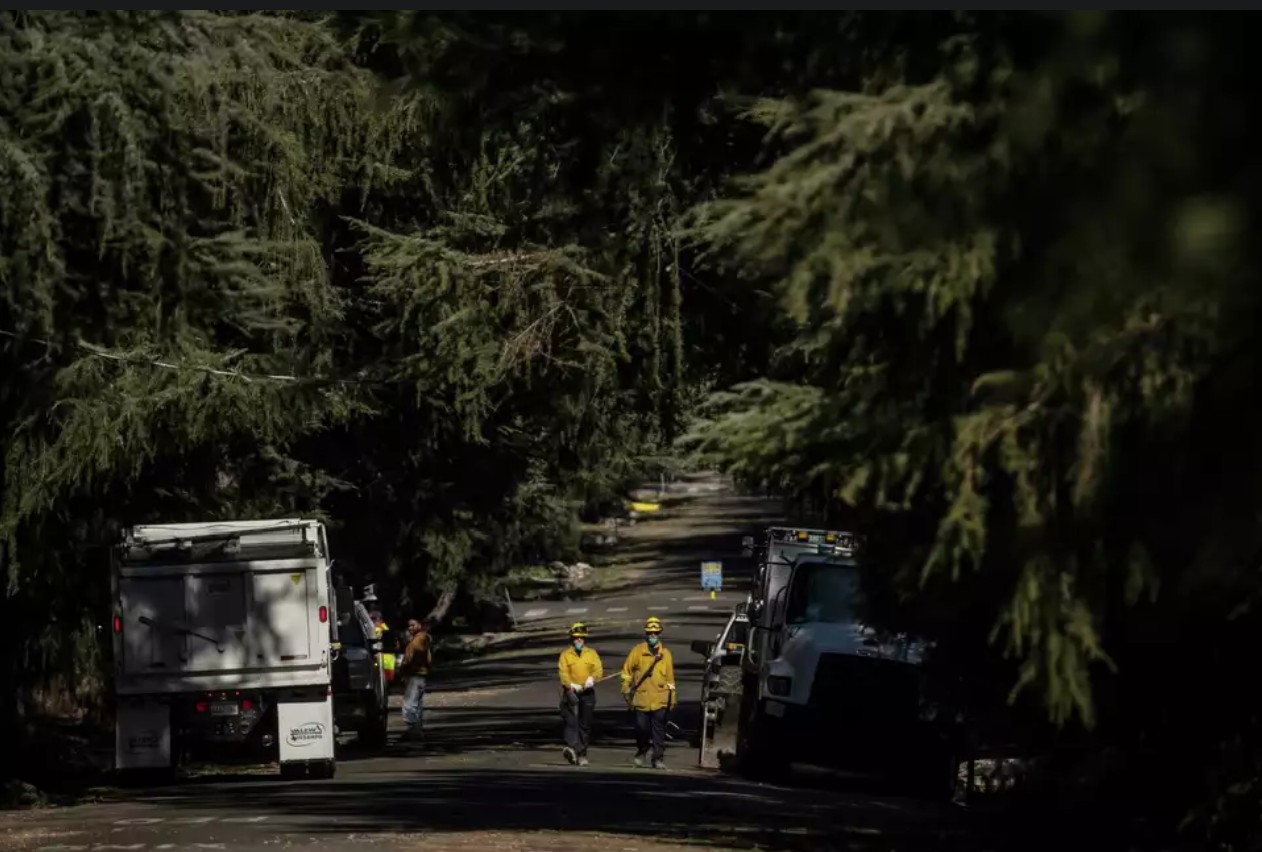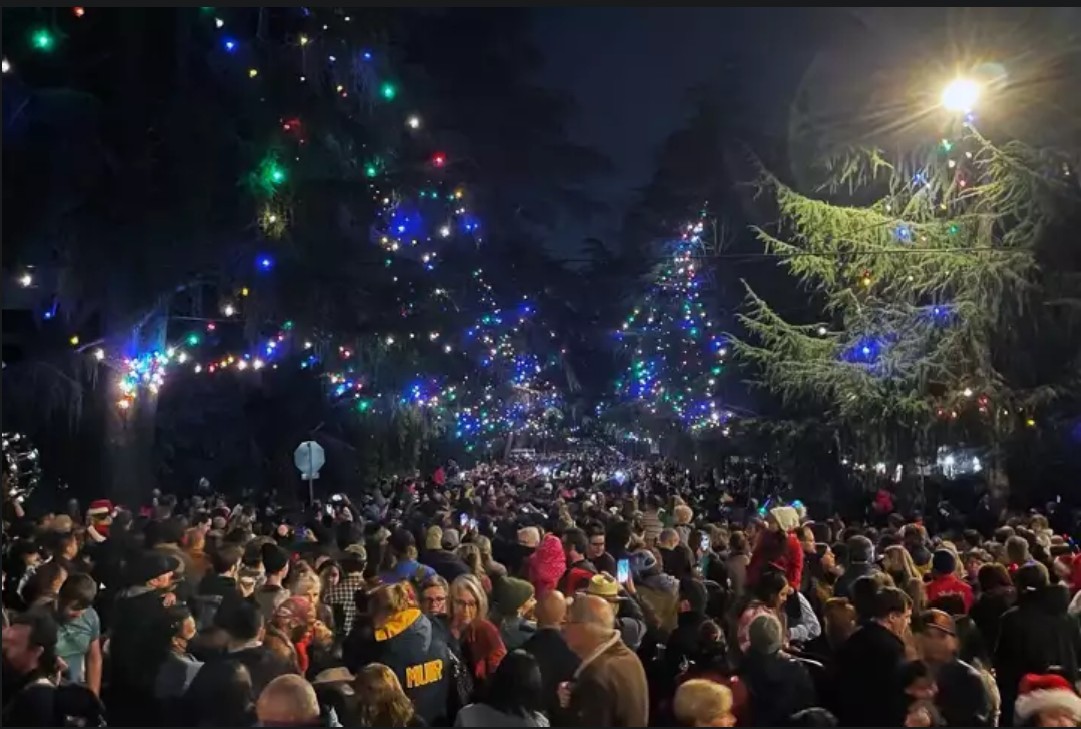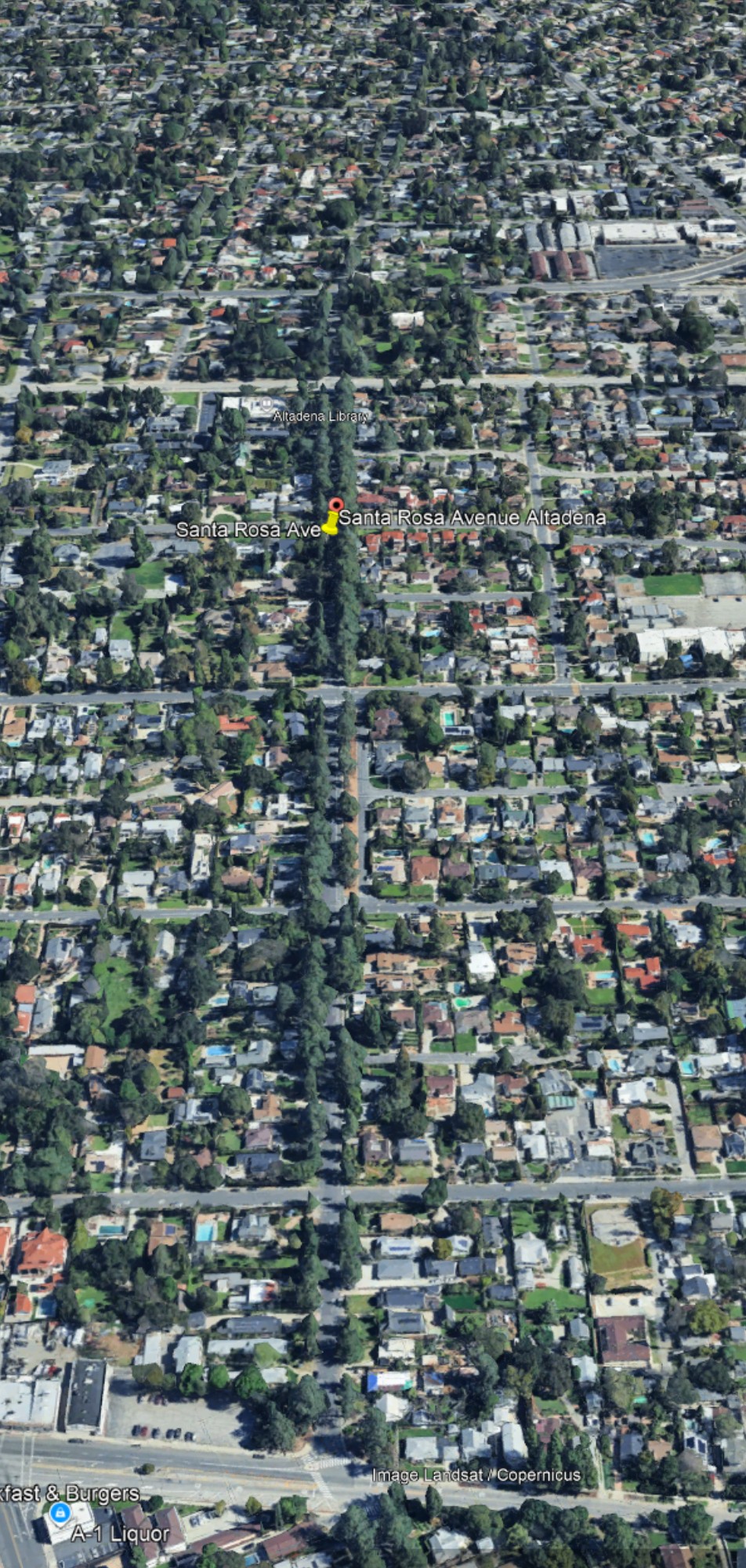Deodar Cedar saved an Altadena street from Fire
Less flammable than vegetation such as pine
needles — hey line the street.
Sparing homes on the street from being destroyed by the Eaton Fire.
The street, now a river of green, flows through
ALTADENA, Los Angeles County and marks
where the Eaton firestorm inexplicably
blew by and left rows of homes untouched.
Over 100 cedars native to the Himalayan mountains line
Santa Rosa Avenue, which is known by locals
and on historical markers as Christmas Tree Lane.
The mile-long avenue is lit up in December with thousands of colorful
holiday lights strung up in the trees.
The Eaton Fire turned block after block of Altadena into ashen ruins.
|
 |
| These cedars still stand where they have grown
since their 19th century planting. Embers didn’t take hold in their
needles — even with about 20,000 lights, wires and electrical boxes hung
high in their boughs.
Strings of lights are hauled up each December with ropes and pulleys and
connected to electrical boxes affixed to each tree trunk about 20-25 feet
from the ground.
Southern California Edison maintains the electrical boxes, the tree bark
contained special “fire-resistant sap.” |
 |
|
AND/OR the mile-long stand of cedars could have created a wind break. Christmas Tree Lane was within the uneven path of the fire’s southern
edge.
Flames leapfrogged some homes and decimated others, including properties
along the northern end of Santa Rosa Avenue.
Still, the trees are not a panacea: Some California communities do not want them planted in fire-prone areas. |
 |
SOURCE

BEFORE ( google earth)
The bark of Cedrus deodara contains large amounts of
taxifolin.[4]
The wood contains
cedeodarin,
ampelopsin,
cedrin,
cedrinoside,[5] and
deodarin
(3′,4′,5,6-tetrahydroxy-8-methyl dihydroflavonol).[6]
The main components of the needle essential oil include
α-terpineol (30.2%),
linalool
(24.47%),
limonene (17.01%), anethole (14.57%),
caryophyllene (3.14%), and eugenol (2.14%).[7]
The deodar cedar also contains lignans[8] and
the phenolic sesquiterpene
himasecolone,
together with isopimaric acid.[9]
Other compounds have been identified, including (−)-matairesinol,
(−)-nortrachelogenin,
and a dibenzylbutyrolactollignan (4,4',9-trihydroxy-3,3'-dimethoxy-9,9'-epoxylignan).[10]
|

